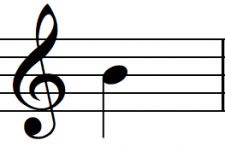


At about the same time DEC launched DSM-11 (Digital Standard MUMPS) for the PDP-11. These efforts proved successful a standard was complete by 1974, and was approved, on September 15, 1977, as ANSI standard, X11.1-1977. In the Fall of 1972, many MUMPS users attended a conference in Boston which standardized the then-fractured language, and created the MUMPS Users Group and MUMPS Development Committee (MDC) to do so. Another noteworthy platform was Paul Stylos' DEC MUMPS-11 on the PDP-11, and MEDITECH's MIIS. Word about MUMPS spread mostly through the medical community, and was in widespread use, often being locally modified for their own needs.īy the early 1970s, there were many and varied implementations of MUMPS on a range of hardware platforms. MUMPS was soon ported to a number of other systems including the popular DEC PDP-8, the Data General Nova and on DEC PDP-11 and the Artronix PC12 minicomputer. The portability proved to be useful and MUMPS was awarded a government research grant, and so MUMPS was released to the public domain which was a requirement for grants. It was first installed at Health Data Management Systems of Denver in May 1971. MUMPS programs do not have a standard way to refer to memory directly at all, in contrast to C language, so since the multitasking was enforced by the language, not by any program written in the language it was impossible to have the risk that existed for other systems.ĭan Brevik's DEC MUMPS-15 system was adapted to a DEC PDP-15, where it lived for some time. The lack of memory management hardware also meant that all multi-processing was fraught with the possibility that a memory pointer could change some other process. It was a few years until Unix was developed. Even on Mainframes, the variant of batch processing where a program was run to completion was the most common implementation for an operating system of multi-programming. Although timesharing on mainframe computers was increasingly common in systems such as Multics, most mini-computers did not run parallel programs and threading was not available at all. The MUMPS team chose to include portability between machines as a design goal.Īn advanced feature of the MUMPS language not widely supported in operating systems or in computer hardware of the era was multitasking. Some aspects of MUMPS can be traced from RAND Corporation's JOSS through BBN's TELCOMP and STRINGCOMP. MUMPS was then an interpreted language, yet even then, incorporated a hierarchical database file system to standardize interaction with the data and abstract disk operations so they were only done by the MUMPS language itself. Octo Barnett and Neil Pappalardo were also involved with MGH's planning for a Hospital Information System, obtained a backward compatible PDP-9, and began using MUMPS in the admissions cycle and laboratory test reporting. The original MUMPS system was, like Unix a few years later, built on a DEC PDP-7. It was later rewritten by technical leaders Dennis "Dan" Brevik and Paul Stylos of DEC in 19. Octo Barnett's lab at the Massachusetts General Hospital (MGH) in Boston during 19. MUMPS was developed by Neil Pappalardo, Robert Greenes, and Curt Marble in Dr. This provides tight integration of unlimited applications within a single database, and provides extremely high performance and reliability as an online transaction processing system.

Ī unique feature of the MUMPS technology is its integrated database language, allowing direct, high-speed read-write access to permanent disk storage. federal hospitals and clinics, and provide health information services for over 54% of patients across the U.S. MUMPS-based information systems run over 40% of the hospitals in the U.S., run across all of the U.S. MUMPS technology has since expanded as the predominant database for health information systems and electronic health records in the United States. It was originally developed at Massachusetts General Hospital for managing hospital laboratory information systems. MUMPS ("Massachusetts General Hospital Utility Multi-Programming System"), or M, is a high performance transaction processing key–value database with integrated programming language.


 0 kommentar(er)
0 kommentar(er)
